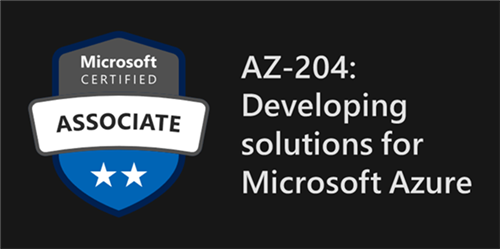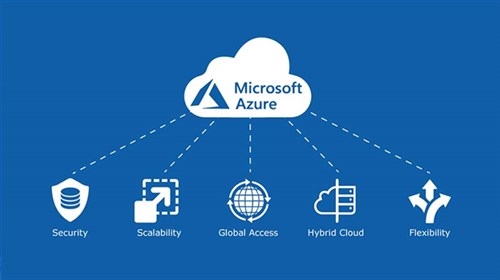min.pngL.jpg)
The Major Applications that Can be Linked to Cloud are:
- Creation of apps and services
- Data backup and storage
- Web hosting and blogging
- Video audio streaming
- Data pattern analysis
Also Read: What is Azure Cloud? Its Benefits and Features
Types of Cloud Computing Service
The cloud is essentially a metaphor for the internet or the world wide web. Its origins can be traced back to days of presentations and flowcharts which represented the massive server infrastructure of the internet as a free cloud. This cloud could accept new connections and enable data access without hardware restrictions.
Before cloud computing, IT professionals and other users relied entirely on local hardware storage. This means all the data professionals would store their data and information on a physical device, ensuring easy and quick data access. However, it also restricted access and connectivity to one physical location and increased the likelihood of loss of data in case the physical data storage components were damaged or destroyed.
What is Cloud Computing and How Does It Work?
In simple words, cloud computing refers to the access and storage of programs and data over a virtual network or the internet instead of depending on a physical drive. Cloud computing allows local devices to access cloud data applications and platforms over the internet using remote servers, computers and databases.
The frontend component consists of access to client devices, networks, cloud applications and browsers. The backend component is made up of servers, computers and databases. It functions as a data storage repository. In cloud computing, the frontend and backend are connected by an internet connection. Data stored in the backend can easily be accessed using frontend components and resources.
A centralised server manages all the communication between the two components. It depends on established protocols to ensure users can exchange data easily. The server can choose either middleware or software to manage the linking of cloud servers and various client devices. Generally, every individual workload or application has a dedicated server. Cloud computing heavily depends on automation and virtualisation technologies. Automation and its related cloud orchestration functionalities give users an advanced level of self-service capabilities for provisioning resources, connecting services and deploying workloads without the IT team of the cloud provider intervening directly.
There are several cloud computing services offered today. Each of these services can be broadly divided into 3 categories. These are as follows:
1. IaaS: Infrastructure-as-a-Service is a cloud computing service offered by providers like AWS (Amazon Web Services). Such a provider would give companies virtual server storage and instance along with APIs (application programming interfaces) that allow users to migrate their workloads to virtual machines or VMs. A user has a specific storage capacity volume allocated to them, and they can stop, start, configure and access the storage and the virtual machine in whichever way they desire. An IaaS provider offers memory-optimised, compute-optimised, small, medium and large and extra-large instances while enabling instance customisation for a wide range of workload requirements. The IaaS model is the closest thing to remote data centres for a business user.
2. PaaS: This refers to the Platform-as-a-Service model. In this model, a cloud provider uses its infrastructure for development tool hosting. A user accesses these tools using APIs, gateway software or web portals over the internet. PaaS services are used for general development requirements, while several PaaS service providers also host software post development. Google App Engine, AWS Elastic Beanstalk and Salesforce’s Lightning Platform are the most widely used PaaS products today.
3. SaaS: Software-as-a-Service refers to a cloud distribution model that uses the internet to deliver software applications known as web services. A user can access a SaaS service or application from anywhere with just a mobile device or computer system with an internet connection. The SaaS cloud computing model gives users access to databases and application software. Microsoft 365 is the most commonly used SaaS application today for email and productivity services.
You May Also Like: Cloud Computing Interview Questions Answers
Cloud Computing Deployment Models:
Cloud deployment models can be defined as private, public or hybrid models or services.
In the private cloud model, internal users can access services using a business’ data centre. This model allows enterprises to create and maintain their own cloud infrastructure. It provides the convenience and versatility of cloud services while preserving the control, management and security that define local data centres.
Public cloud services are delivered over the internet through a third-party CSP (cloud service provider). Public cloud services are available on demand and usually, charge for per-minute or per-hour usage. However, long-term service commitments are also an option for several types of services. As a customer, you only pay for the central processing unit cycles, bandwidth and storage you consume. Some of the leading CSPs for public cloud services are Microsoft Azure, AWS, GCP (Google Cloud Platform), IBM, Tencent and Oracle.
Hybrid cloud services combine the features of on-premises private cloud and public cloud services, ensuring automation and orchestration between them. Enterprises use these services in different ways, running sensitive applications or mission-critical workloads on their private cloud and handling demand spikes or workload bursts using their public cloud. The objective behind a hybrid cloud is to create an automated, unified and scalable cloud environment that can provide all public cloud features while ensuring a greater degree of control over mission-critical data. Additionally, enterprises today are increasingly embracing multi-cloud operational models with multiple IaaS service providers. This helps apps migrate from one cloud provider to another and even work simultaneously with two providers or more.
There are several reasons for enterprises to adopt multi-cloud systems. It helps them in minimising cloud service outage risks and benefitting from competitive pricing from specific providers. Multi-cloud app development and implementation can be challenging due to the differences between the APIs and services of multiple vendors. However, with time multi-cloud deployments will become easier with providers’ APIs and services converging and standardising due to industry initiatives like the Open Cloud-Computing Interface.
Features of Cloud Computing:
The cloud computing domain has established itself over the past few decades. The cloud computing infrastructure you see today demonstrates a wide range of characteristics which add value and a competitive advantage to businesses of different sizes. The most popular features of cloud computing today are:
-
Self-service provisioning: A user can create or use compute resources on demand for nearly every type of workload. They can provision computing capabilities like network storage and server time, which removes the need for traditional IT administrators who would manage and provision compute resources.
-
Elasticity: Enterprises can scale up freely as their computing needs increase or scale down whenever demand dips. This type of flexibility removes the need for expensive local infrastructure which may or may not stay active.
-
Pay-per-use: Compute resources are usually measured at the granular level, which enables a user to pay for only the workloads and resources they use.
-
Resilience: A cloud service provider generally implements redundant resources that provide resilient storage and keep critical workloads running (generally across several global regions).
-
Migration flexibility: Enterprises can shift several worlds from or to the cloud, or even shift to a different platform as needed. This can be done automatically or manually to save costs or upgrade to services whenever they are introduced.
-
Broad network access: Users can upload data remotely or access cloud data from anywhere using a mobile device or laptop as long as their internet connection is active.
-
Resource pooling and multi-tenancy: The multi-tenancy feature allows several customers to share physical resources and applications but still get security and privacy for their data. Resource pooling allows cloud providers to attend to several customers using the same resources. These resource pools that cloud providers have must be flexible and large enough to service the needs of several customers.
You May Also Like: Big Data and Cloud computing: An Ideal Combination
Advantages of Cloud Computing:
1. Cost management: Cloud infrastructure deployment significantly reduces capital costs, since enterprises no longer need to spend large amounts on maintaining and buying physical equipment. This reduces capital expenditure for businesses, regardless of their size. What’s more, businesses don’t need to hire huge teams of IT professionals to handle cloud operations as their cloud providers provide them with the expertise and support they need. Cloud computing also reduces downtime and affiliated costs. Since there are fewer malfunctions due to the virtual storage of data, businesses don’t need to spend money or time fixing these issues.
2. Workload and data mobility: Storing data in the cloud means users can get access to it using any device from anywhere using just their active internet connection. Now, users don’t need to carry USB drives, CDs or hard drives whenever they need to access their data. They can simply use their mobile devices or smartphones to access any corporate data, allowing remote workers easy updates from their on-site colleagues and overseas customers.
3. BCDR (Business continuity and disaster recovery): Every organisation worries about losing data to fraud or corruption. Data storage in a cloud environment can guarantee users that their data is always accessible even though their device might be lost or stolen. Using cloud-based solutions, enterprises can recover data rapidly in emergencies like power outtakes and natural disasters. This enables BCDR and ensures data and workloads are always available despite business disruption.
To gain expertise and build a career in cloud computing, enrol in a cloud computing training course today.





(1).pngM.jpg)

COMMENT